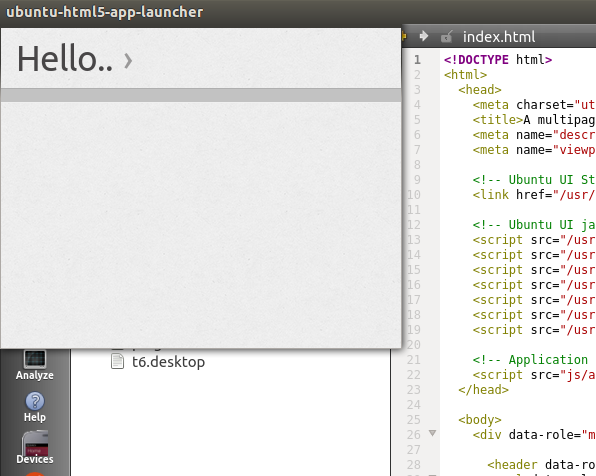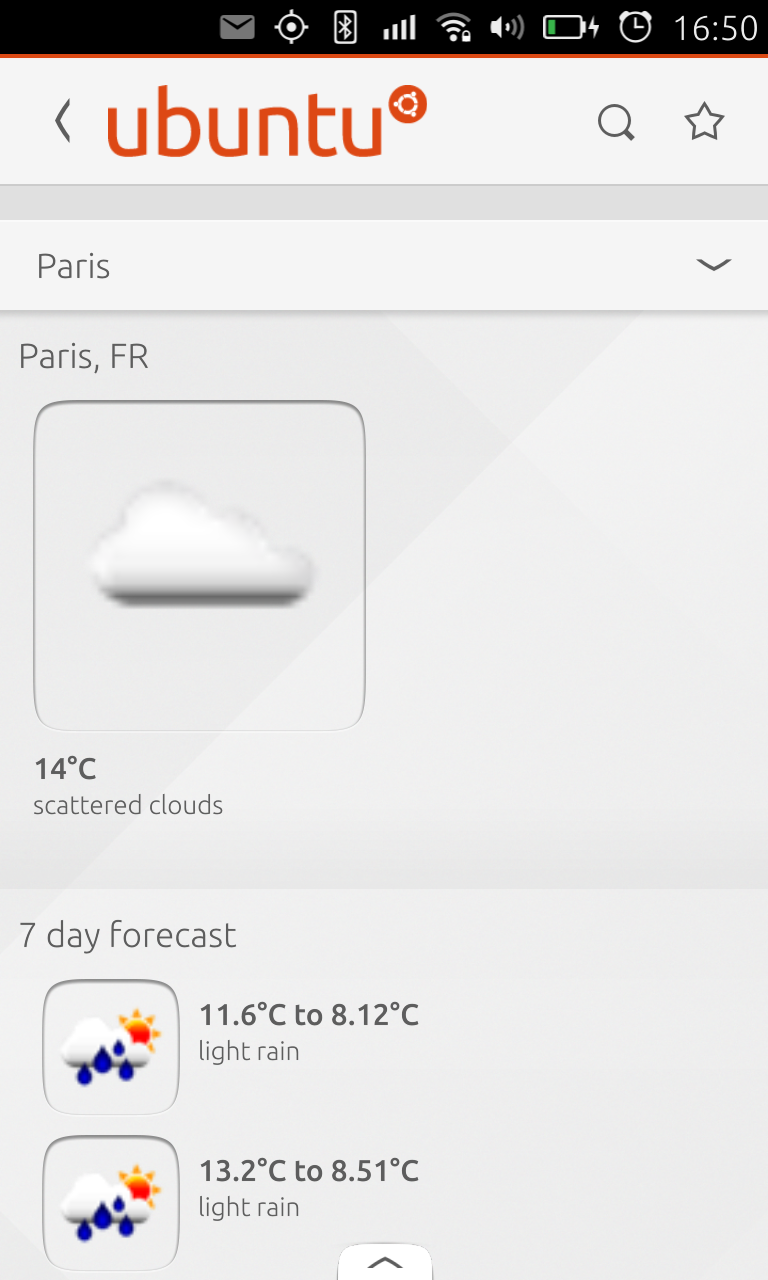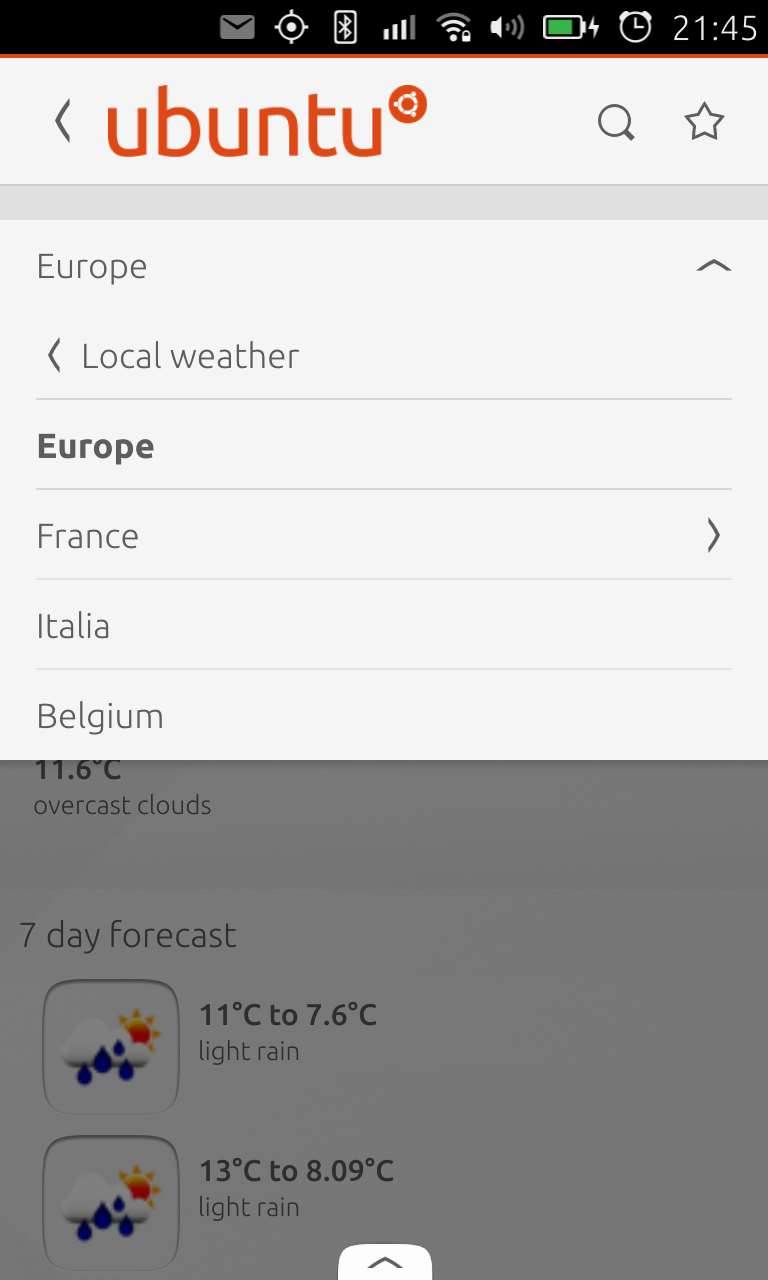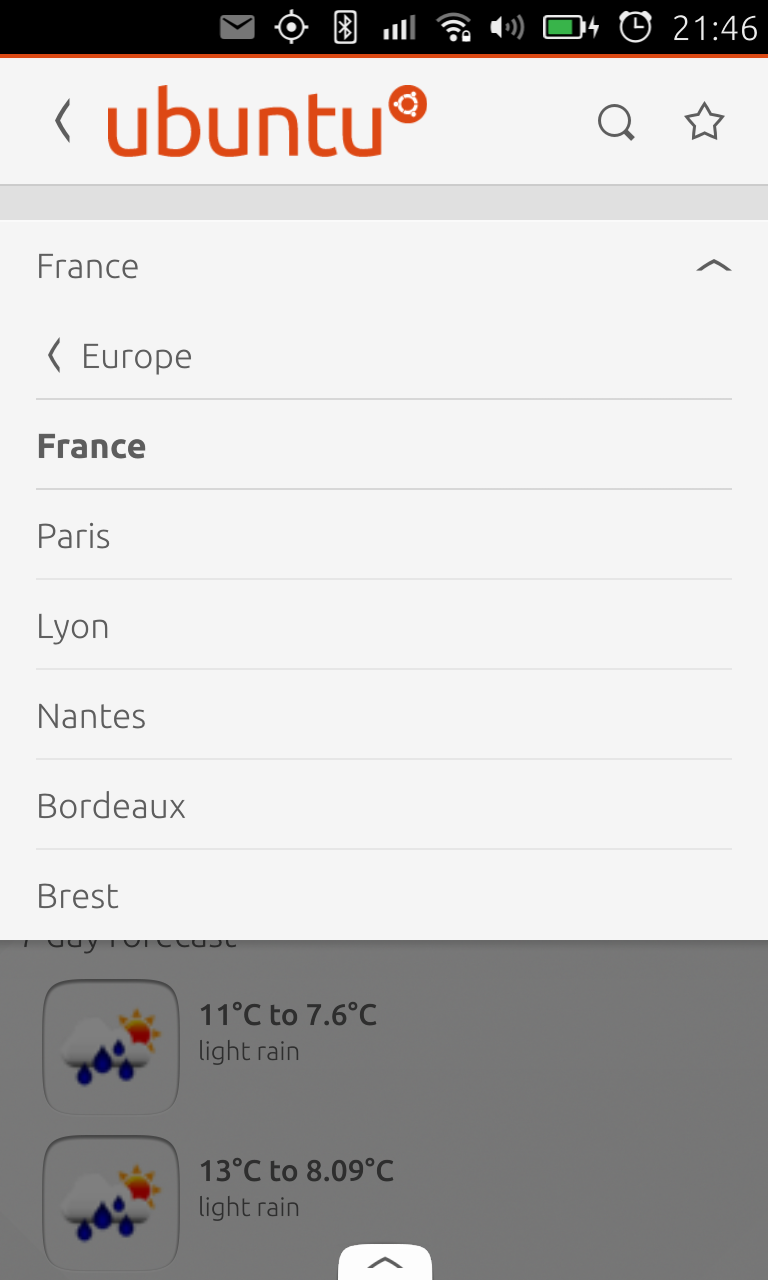Scopes tutorials - departments
Departments are a way for the user to navigate the data source exposed by the scope. A Music scope can use them to allow browsing by genre, a Youtube scope could list channels and playlists, etc. Departments can also display a full hierarchy of sub-departments. In this tutorial, you are going to learn how to create and add them to your scope.
This tutorial assumes you have a working scope. You can create a simple weather scope by selecting New Project in QtCreator and pick the Unity Scope template. This is what we are going to use in the next steps. If you need any help for these steps, have a look at the scope development procedures article.
Two easy steps
Departments are registered on the reply object of your scope. This means you can dynamically change departments between queries. To achieve that, we are going to edit only src/query.cpp. You can find the source of this example here.
Creating departments
Let’s start by adding a new include near the top of the file:
#include <unity/scopes/Department.h>
Then, in the try() part of the Query::run method, we are going to create
our root department, this is the level 0 of our departments hierarchy.
The departments create function takes 3 arguments :
- The department id (empty string for the root department)
- The query method the department will trigger
- The display name
Since we are working on a weather scope, let’s pick a relevant name for our root department, remember that it will be shown by default when the user opens the scope and should match the data you are surfacing.
// Create the root department with an empty string for the 'id' parameter (the first one) sc::Department::SPtr all_depts = sc::Department::create("", query, "Local weather");
Then, we are going to create two other departments.
// Create new departments sc::Department::SPtr paris_department = sc::Department::create("paris,fr", query, "Paris"); sc::Department::SPtr berlin_department = sc::Department::create("berlin,de", query, "Berlin");
As you can see, my departments ids are a bit odd: “paris,fr”, “berlin,de”. That’s because I’m going to use them as query strings the scope will run, when the user selects one of them.
Now, since departments are a hierarchy, we need to add these departments as sub-departments of the root.
// Register them as subdepartments of the root
all_depts->set_subdepartments({paris_department, berlin_department});
Note that you can also use add_subdepartment if you want to add another
department to an existing list of sub-departments. Have a look at the APIdoc for the complete list of
departments methods.
The last thing needed is registering the root department on the reply object.
// Register the root department on the reply
reply->register_departments(all_depts);
If you try to run the scope at this point, you should see a new piece of UI at the top of your results!


Using departments in queries
Departments are only available in surfacing mode (when the user has not
manually entered a query). In the try() part of the Query::run method, you
can see the following lines :
if (query_string.empty()) {
// If the string is empty, get the current weather for London
current = client_.weather("London,uk");
} else {
// otherwise, get the current weather for the search string
current = client_.weather(query_string);
}
Let’s make a simple change to handle departments queries: we are going to
check if the selected department_id is not empty. That will mean the user
has selected a department (since the empty one is the root, selected by
default).
if (!query.department_id().empty()) {
// If a department other than the root is selected, get the current weather for its id
current = client_.weather(query.department_id());
} else if (query_string.empty()) {
// If the search string is empty, get the current weather for London
current = client_.weather("London,uk");
} else {
// otherwise, get the current weather for the search string
current = client_.weather(query_string);
}


Complex hierarchies
Departments allow navigating complex hierarchies, let’s demonstrate that with a slightly bigger example. We are going to create A root->continents->countries->city hierarchy.
sc::Department::SPtr all_depts = sc::Department::create("", query(), "Local weather"); sc::Department::SPtr europe_department = sc::Department::create("europe", query(), "Europe"); sc::Department::SPtr africa_department = sc::Department::create("africa", query(), "Africa"); sc::Department::SPtr northamerica_department = sc::Department::create("north america", query(), "North America"); sc::Department::SPtr southamerica_department = sc::Department::create("south america", query(), "South America"); sc::Department::SPtr asia_department = sc::Department::create("asia", query(), "Asia"); sc::Department::SPtr australia_department = sc::Department::create("australia", query(), "Australia"); all_depts->set_subdepartments({africa_department, northamerica_department, southamerica_department, asia_department, europe_department, australia_department}); sc::Department::SPtr france_department = sc::Department::create("france", query(), "France"); sc::Department::SPtr italia_department = sc::Department::create("italia", query(), "Italia"); sc::Department::SPtr belgium_department = sc::Department::create("belgium", query(), "Belgium"); europe_department->add_subdepartment(france_department); europe_department->add_subdepartment(italia_department); europe_department->add_subdepartment(belgium_department); france_department->add_subdepartment(sc::Department::create("paris,fr", query(), "Paris")); france_department->add_subdepartment(sc::Department::create("lyon,fr", query(), "Lyon")); france_department->add_subdepartment(sc::Department::create("nantes,fr", query(), "Nantes")); france_department->add_subdepartment(sc::Department::create("bordeaux,fr" , query(), "Bordeaux")); france_department->add_subdepartment(sc::Department::create("brest,fr", query(), "Brest")); reply->register_departments(all_depts);
Lets see what it does !




Going further
Of course, nobody wants to create a large numbers of departments by hand, you can have a look at this example scope where departments are generated via a request to an online service. If the API you are using is providing a way to list item categories or has data that can be split in a logical way, make sure you provide departments for the user to easily browse it!


 Ubuntu Phone documentation
Ubuntu Phone documentation